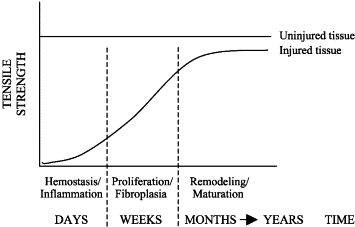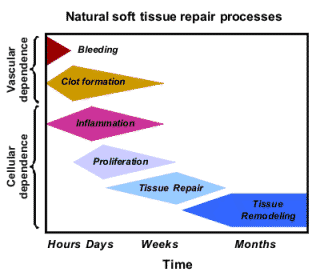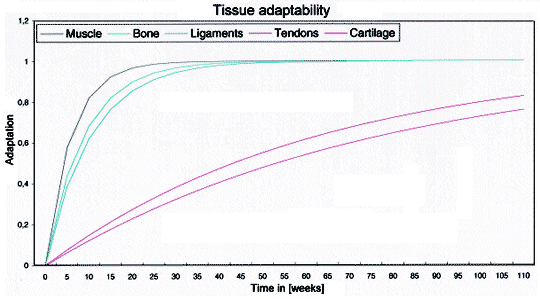
The Body is Built to Heal
Within your body you have all the necessary processes for the vital functioning of your body, to combat invaders, to recognize and respond to genetic mutations, and to repair and regenerate injured structures. In fact, your body does this every day, for example removing damaged red blood cells (erythrocytes) and replacing them with new cells.
When your are injured, the healing process usually goes through four phases. Initial trauma results in damage to tissue and bleeding. This is followed by inflammation, a response of your body to clean up the debris resulting from damage to the anatomical structures as the result of the initial trauma and secondary death of tissue resulting from your body’s response to the trauma and the effect of this response on surrounding tissue (adjacent cells to the injury may have been affected by the disturbance in the chemical environment, pressure from the swelling and inflammation, or disruption of normal blood supply in the area).
Source: http://www.spinalrestoration.com/scientific_rationale/scientific_rationale1.gif
Inflammation also creates a chemical environment so that the next stage of healing can occur. Repair is when cells migrate to the area and start to lay down new cells that will mature into the tissue that was damaged. Sometimes this is not possible and your body lays down scar tissue that will be less strong and flexible that the original tissue. The final phase is a remodelling phase, where the cells and tissues come to have the same characteristics as the pre-injury tissue. For example, a ligament (that binds two bones together) or even bones will orient their tissues in the direction of the forces that they withstand. This is reflective of another principle discussed; your body reacts to the stresses imposed upon it (see Driving Changes in the Body and Brain).
When the body is not healing properly we must ask: What is stopping the normal physiological processes of healing from doing their work?


What is important to remember is that healing takes time. We see on this graph that some tissues take up to two years to heal completely. An injured tissue is weaker and therefore attempts must be made to protect the area initially, and then through gradual and progressive stress (i.e. treatment and exercise), we can help encourage proper healing and repair, helping the tissue to heal optimally and decreasing the risks of re-injury in the future.
Core Concepts
Click on each principle to learn more
Musculoskeletal Injuries Occur When Demand Exceeds Supply
The Body is Built to Heal
Your Body Reacts and Adapts to what it is Exposed and Experiences
Motion is Lotion: The Benefit of Movement and Exercise
Buddha Nature of Your Body: The Middle Way
Function of Pain


